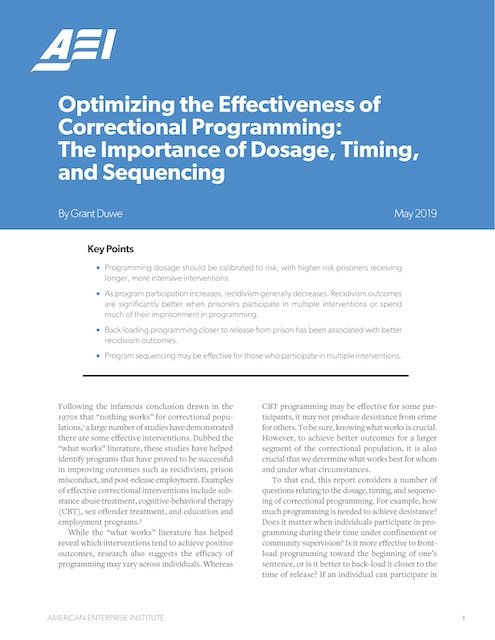By Grant Duwe
Key Points
Despite pursuing a similar goal, the “what works” and desistance literatures have largely ignored and undervalued the contributions the other has made.
The what works literature has been mostly quantitative and has consisted of program evaluations and meta-analyses, leading to the emergence of principles of effective correctional intervention and the risk-needs-responsivity model.
The desistance literature has been more qualitative and has focused on persons rather than correctional programs, stressing the importance of identity transformation in the desistance process.
Correctional systems do not provide “desistance opportunities”—programs, interventions, and services—to the extent they are needed. Programs should become more person-centered by placing a greater emphasis on identity transformation.
Washington, DC: American Enterprise Institute, 2020. 6p



